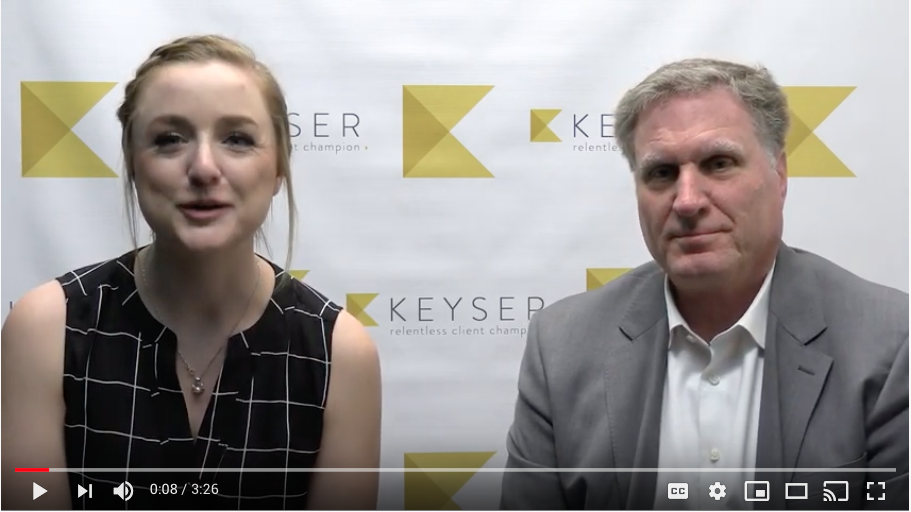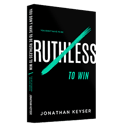Prefer to Read? The full video transcription is below:
Olivia: Hey there Keyser Community, Olivia here. I have Brian Uretzky here with me today. He's our capital markets specialist. He is extremely well educated on what's happening in today's environment. So, for all the viewers out there today, Brian, with so much uncertainty that they're experiencing, what can people do to protect themselves with their commercial real estate decisions today?
Brian: I think one of the most important and challenging things to do at the moment is to really understand all the information that you're receiving. There's more than any time I can remember, there's a lot of noise in the economy, in the market and the headlines. I think it's important to block out some of that noise and really get a good grasp of what the information is saying. And I think of three specific areas where you have to kind of block out some of the noise and really dig in to understand what you're looking at. I think of the stock market for one. I think about the economic data for two. I think about the sources that you're using to get your information. Now on the stock market side, it's very easy to look at the stock strength over the past couple of months and say "oh well, maybe things aren't as bad as we initially thought". And a lot of these businesses are actually doing better than what the expectation was back in March and April. But, you know, that may be true for some businesses and that may be true on a very small level but the truth of the matter is that the fed is providing massive amounts of stimulus to the overall market. They're buying billions of dollars worth of treasury and mortgage debt on a daily basis. They have lending programs in place to help businesses that are struggling and it's given a lot of investors confidence that the fed is going to be there to support the economy as a whole.
Now, that doesn't mean that the economy is in great shape, it just means that the amount of support that's there to the markets is providing some level of comfort to a lot of investors out there. And that doesn't mean stores aren't going to be closing their doors, it doesn't mean that people aren't going to be losing their jobs, it just means that the feds out there are providing massive amounts of support, more than what we saw during the Global Financial Crisis. And really that was the tool that helped, when you think about quantitative easing, that was the tool that helped pull us out of the Global Financial Crisis. So they're using a very strong tool and more force and that's helped provide a lot of support to the stock market. When you think about the economic data as a second example, the economic data is in a very unique place where the numbers that we're seeing are unprecedented and just looking at today's retail sales numbers as an example, it showed a record rise of 17% between May and April. Now some people would look at that and say "wow, the record, that's great", but the truth of the matter is, it's coming from such a depressed level in April that when you put all of the information together, it doesn't look that great in totality. You have to compare April's numbers to February's numbers. You have to compare April's numbers this year to April's numbers from last year. You have to compare May's numbers. When you start to add all that information up, you start to see that the overall economic picture isn't as rosy as maybe today's retail sales reports show.
And finally, I think it's really important to understand the sources. A lot of people have agendas out there, whether they're political or maybe if you're reading a commercial real estate article, maybe you're looking at someone that has a motive to keep commercial real estate prices stable. So they're saying maybe this is a short term, not a long term checkmark type of recovery–it's more of a V-shape because they are incentivized to want it to be a V-shape recovery so you have to understand the source that you're reading, you have to understand the economic data and you have to understand what's happening in the stock market, to really get a good grasp on what the future of the economy hold and what the future of commercial real estate holds.
Olivia: Okay, so what indicators can you use today to help frame your decision-making process?
Brian: Yeah, it's difficult today, at least when you're thinking about things from a commercial real estate perspective. It's difficult today to get a good grasp of what's going to happen within commercial real estate. Mainly because we're in such an unprecedented time, but also because commercial real estate tends to operate with a lag. So when the economic data falls apart it takes a little while for it to actually hit the commercial real estate sector. So, transaction volumes are down, you don't have that liquid market that you normally do to get a good sense of what the future holds.
Additionally, there are other variables out there, right? Do we go back in quarantine? Or are we in a situation where we're going to see a lot of tenants close their doors, we're going to see a lot of defaults on loans? We don't know what the future holds. So you kind of have to accept the fact that the future looks worse, but in terms of how worse, it's difficult to say so what can you do? So one thing you can do is you can look at specific data like how has commercial real estate performed in previous recessions. That would give you at least some sense of what commercial real estate tends to do in a recessionary environment. In that case, you can get a sense and you can see the history and see what's happened with market rents, what's happened with vacancy rates and it can help frame your opinion between today for the short and medium-term.
Additionally, there are other sources that you can use that are out there like Costar to see transaction volume or Green Street Advisors where you can get at least the opinion or appraisal of what's happening across the retail sector, across the industrial sector, across the office sector. And then finally, I personally like to look at the CMBS market because you get monthly data there and you can see when loans are going delinquent, you can see the weakness that's starting to emerge within the retail space and within the hotel space as well. So there are sources you can use to help frame a perspective on what's going to happen in the short and medium-term, but as I said before it's really difficult to get a strong sense of the depth of the weakness just given the fact that we are in such an unprecedented time today.
Olivia: Yeah and there's a lot of variables that come into the commercial real estate industry without a pandemic happening. So whether that's like location or any kind of financial environment there are so many things that are coming in all the time that just add onto the stress of what's happening in today's environment.
Brian: To that point, when you think about the retail space, right? You can look at how retail performed in previous recessions, but now e-commerce is such a big piece of the pie today so maybe retail goes through a period today that's going to be different than what we saw in the previous recession so there are other variables that you can use to help frame your opinion, but at the very least you can strip those out and just see how does commercial real estate perform during a recession and from there, you can start that conversation, overlay the variables and come to a more informed decision in the future.
Olivia: Absolutely, and if you have any questions about what your commercial real estate situation could look like in the future, or have any questions about capital markets, or anything that's happening right now that may be affecting your business, we'd love to have a conversation with you. Go ahead and send us an email at info@keyserco.com, that's info@keyserco.com or give us a call at 602-9-KEYSER. Thanks so much! Have a great day, guys!
Brian: Thanks guys!




